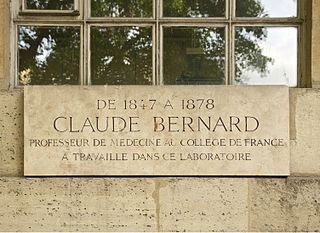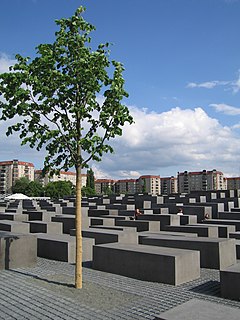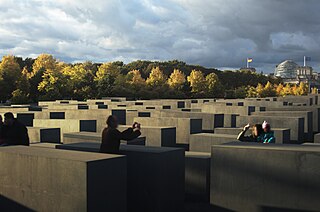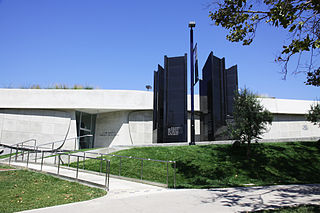Theory
Since the end of World War II, there has been a question as to how one can adequately commemorate the victims of the Holocaust. For a time, it was often regarded with a sense of amnesia until memorialization efforts emerged. Holocaust memorials in Germany face the difficulty of commemorating the victims of a crime it has itself committed. American feminist historian Claudia Koonz evaluates this difference between memorializing the Holocaust as the perpetrator, rather than the victim. [1]

World War II, also known as the Second World War, was a global war that lasted from 1939 to 1945. The vast majority of the world's countries—including all the great powers—eventually formed two opposing military alliances: the Allies and the Axis. A state of total war emerged, directly involving more than 100 million people from over 30 countries. The major participants threw their entire economic, industrial, and scientific capabilities behind the war effort, blurring the distinction between civilian and military resources. World War II was the deadliest conflict in human history, marked by 50 to 85 million fatalities, most of whom were civilians in the Soviet Union and China. It included massacres, the genocide of the Holocaust, strategic bombing, premeditated death from starvation and disease, and the only use of nuclear weapons in war.
Amnesia is a deficit in memory caused by brain damage, disease, or psychological trauma. Amnesia can also be caused temporarily by the use of various sedatives and hypnotic drugs. The memory can be either wholly or partially lost due to the extent of damage that was caused. There are two main types of amnesia: retrograde amnesia and anterograde amnesia. Retrograde amnesia is the inability to retrieve information that was acquired before a particular date, usually the date of an accident or operation. In some cases the memory loss can extend back decades, while in others the person may lose only a few months of memory. Anterograde amnesia is the inability to transfer new information from the short-term store into the long-term store. People with this type of amnesia cannot remember things for long periods of time. These two types are not mutually exclusive; both can occur simultaneously.

Germany, officially the Federal Republic of Germany, is a country in Central and Western Europe, lying between the Baltic and North Seas to the north, and the Alps to the south. It borders Denmark to the north, Poland and the Czech Republic to the east, Austria and Switzerland to the south, France to the southwest, and Luxembourg, Belgium and the Netherlands to the west.
According to scholar James E. Young, Holocaust memorials today have an anti-redemptive nature, reminding visitors of the horror of the Holocaust. These "countermonuments" work to bring events of the past into present awareness rather than relegate them to the past. [2] These same subjects of cultural amnesia and remembrance of the Holocaust appear in the works of other post-Holocaust artists, such as the German artist Anselm Kiefer, and writers such as Romanian poet Paul Celan.

Anselm Kiefer is a German painter and sculptor. He studied with Joseph Beuys and Peter Dreher during the 1970s. His works incorporate materials such as straw, ash, clay, lead, and shellac. The poems of Paul Celan have played a role in developing Kiefer's themes of German history and the horror of the Holocaust, as have the spiritual concepts of Kabbalah.
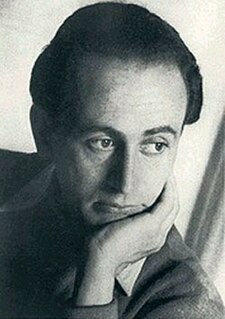
Paul Celan was a Romanian-born German language poet and translator. He was born as Paul Antschel to a Jewish family in Cernăuți, in the then Kingdom of Romania, and adopted the pseudonym "Paul Celan". He became one of the major German-language poets of the post-World War II era.




